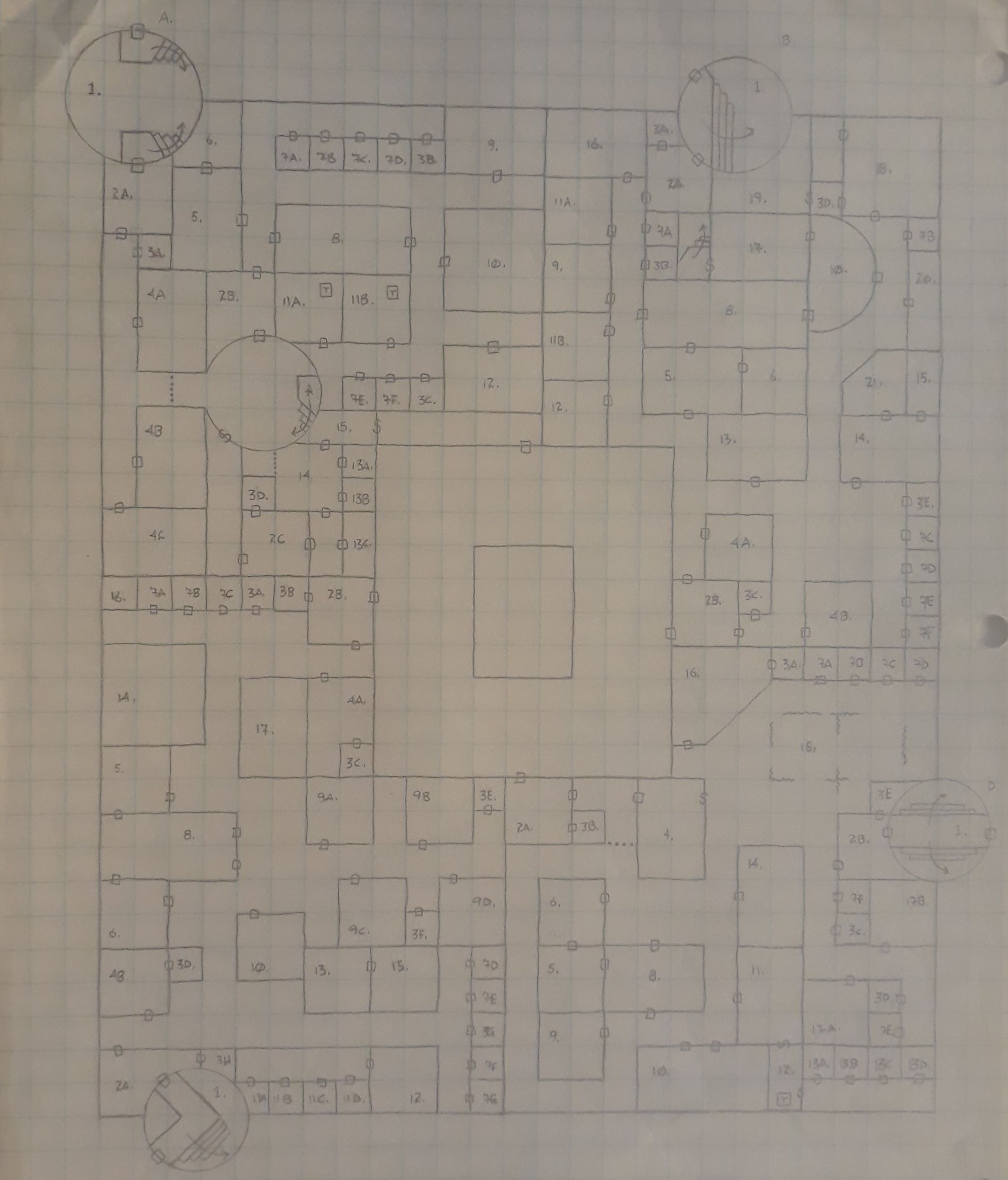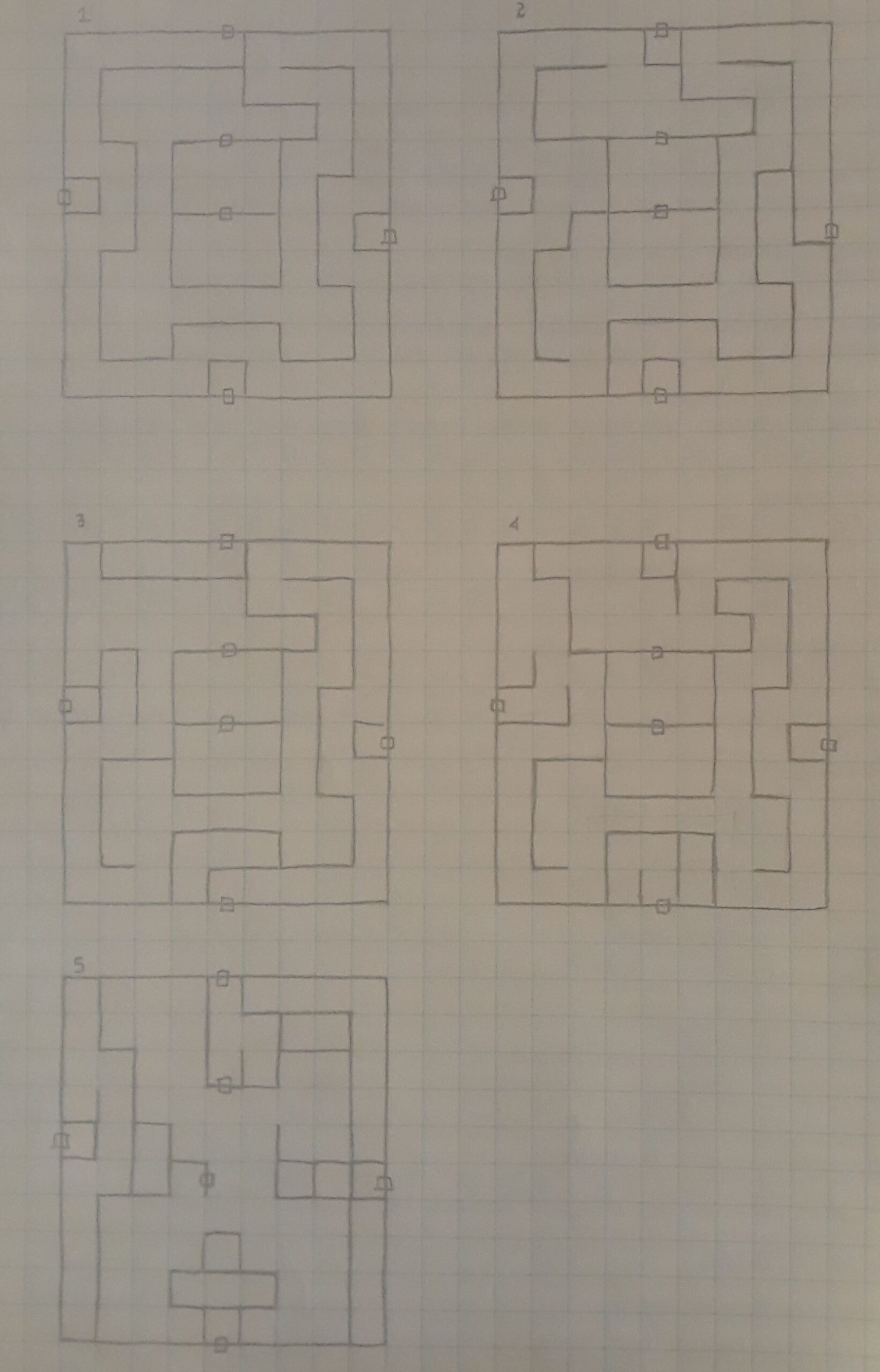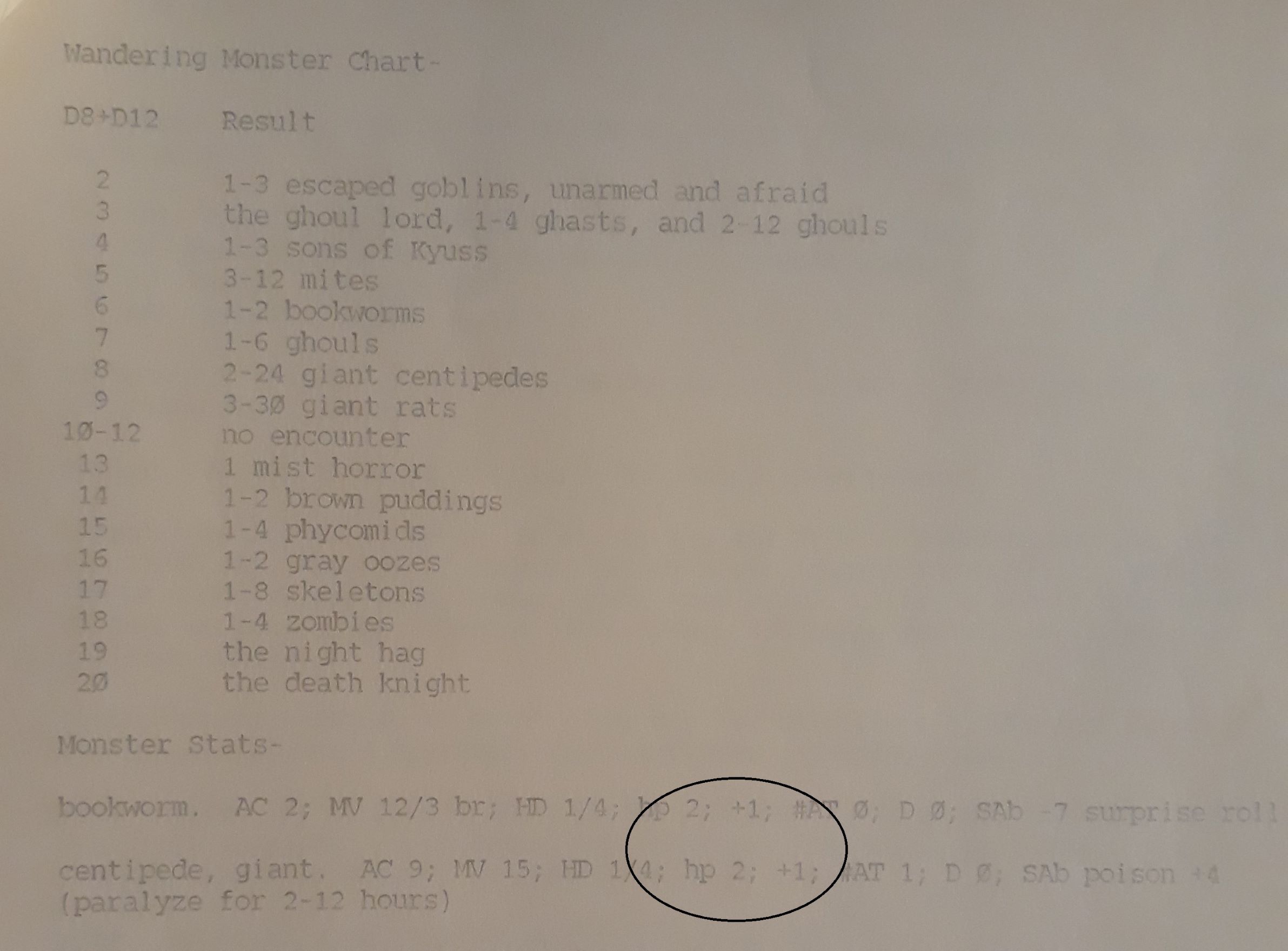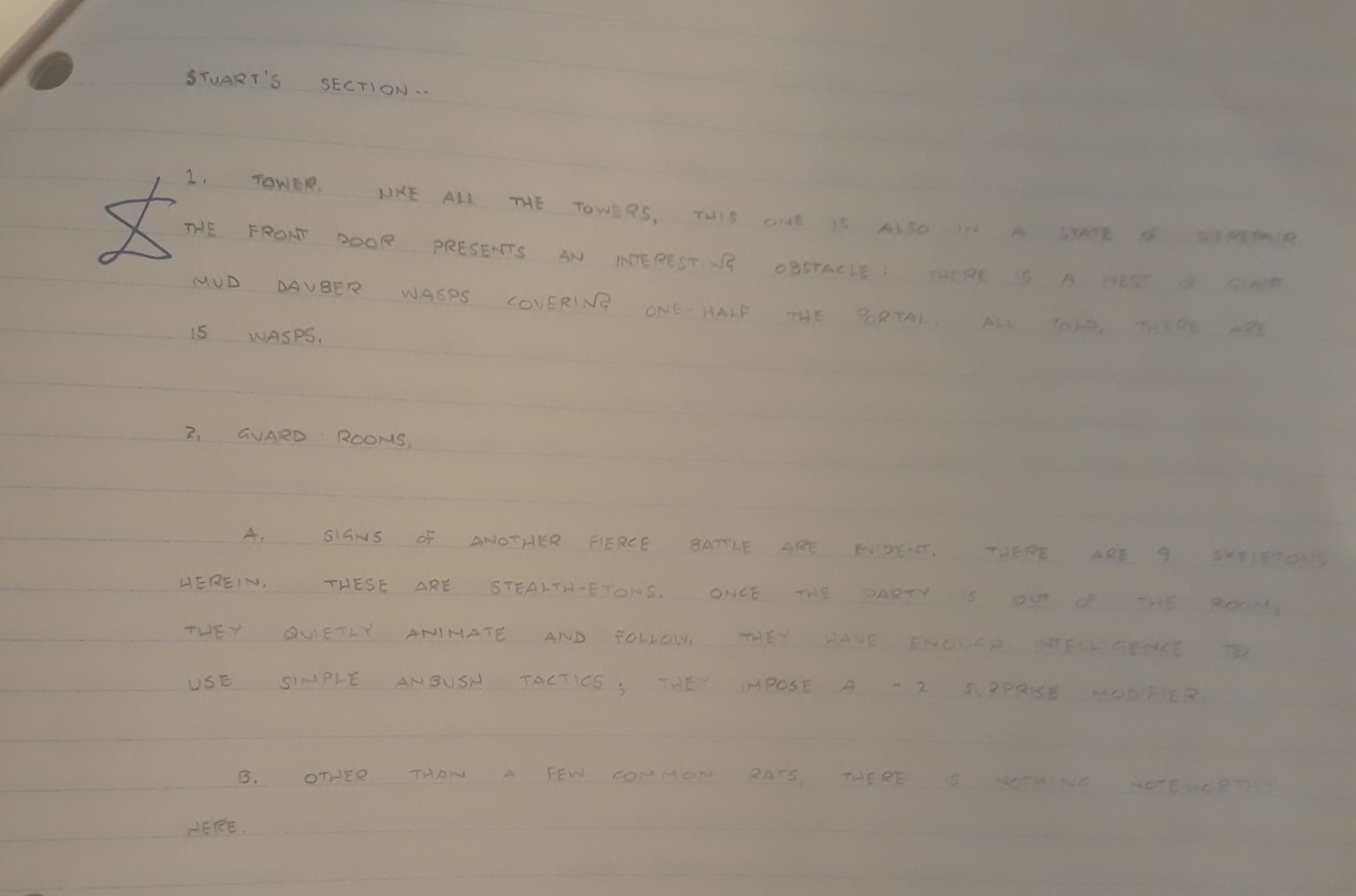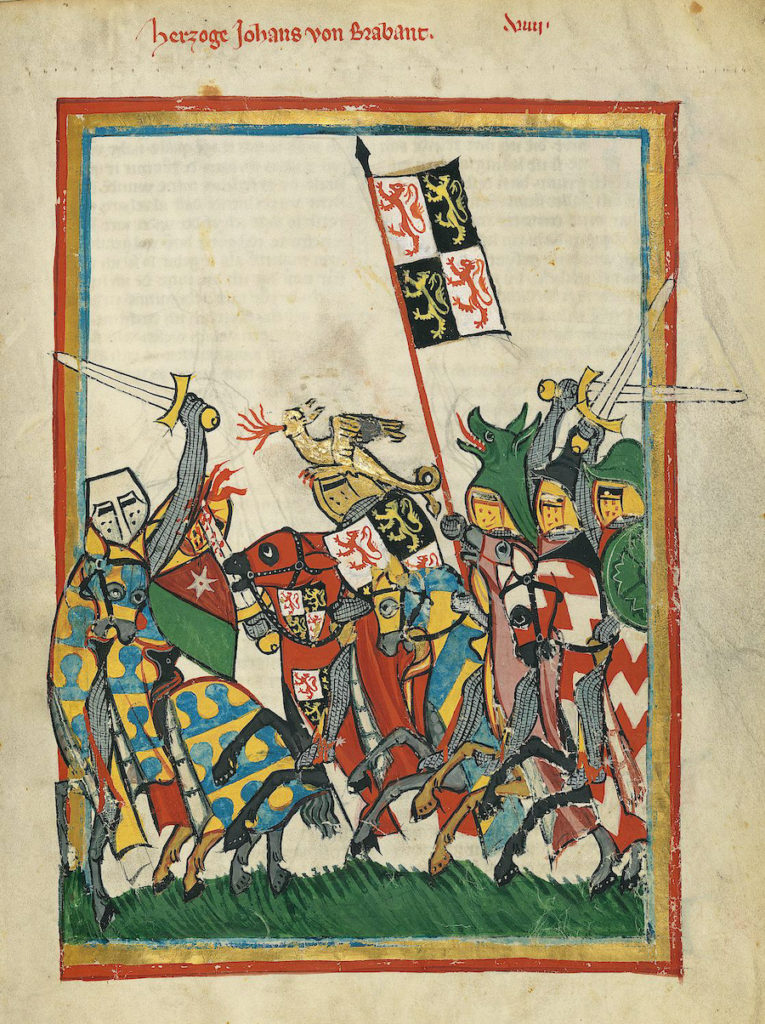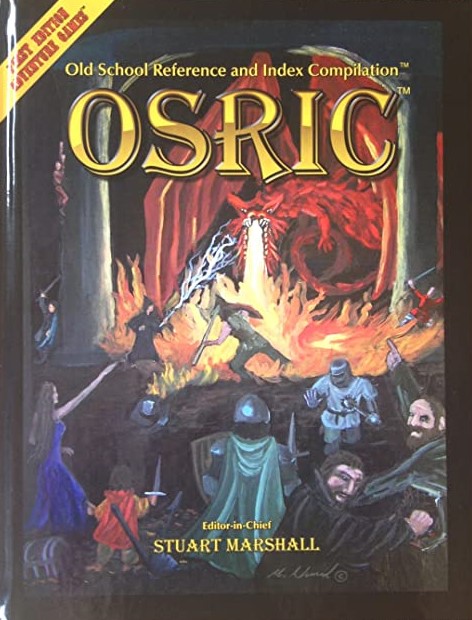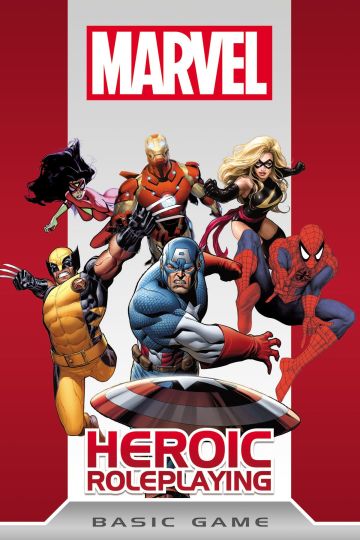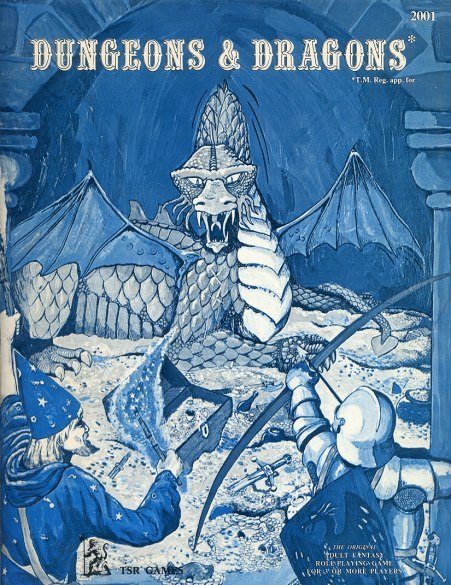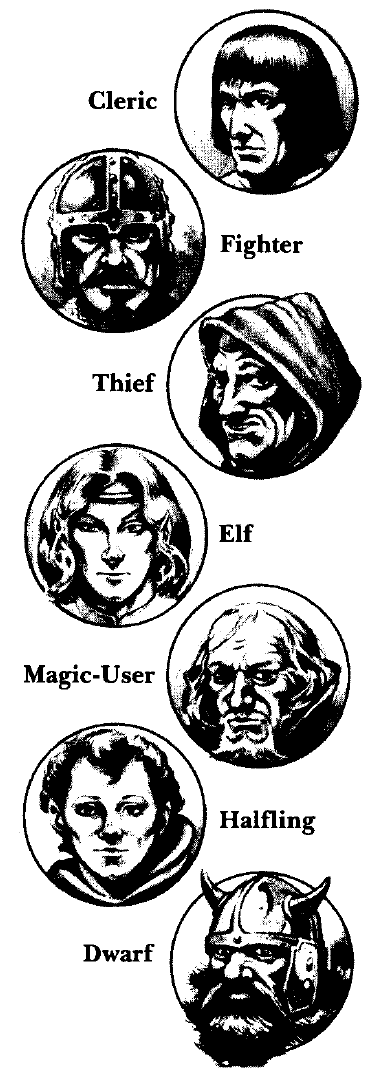Four Evil Brothers’ Fortress
In the past few weeks, I finally got my library remodeled. New shelving installed, new paint, new floor, better use of space, et cetera. It’s a roomier, brighter place now with more exposed wall on which to display framed art, my Greyhawk maps, and a selection of LPs above my turntable. During the reshelving process, I found 18 pages stapled in the upper lefthand corner. The pages summarize a dungeon that I wrote some time after I was stationed at Fort Bragg, North Carolina (so, after the summer of 1985). The dungeon itself is written for 1E AD&D. After this paragraph, you’ll see a column of pics of the dungeon. Each pic embiggens when clicked upon (caveat: the pictures might not open in a new tab).
The dungeon had an poetric intro, which I’m pretty sure I wrote in the form of an epic limerick. I strung together several limericks that told the story of four evil brothers who built a fortress in a swamp. Mondo, a paladin, assembled a team of heroes, who assaulted the evil brothers’ fortress, emerging victorious but only after many goodfolk fell in battle. Unfortunately, I no longer have that epic limerick, thus making the world a poetically poorer place.
The fortress itself is divided into five parts. Each brother lived in one of the sections accessed via tower (the circular rooms to the northwest, north, east, and southwest). Each tower leads into a quadrant (loosely speaking), and each quadrant is not directly accessible from any other quadrant. Each brother had his own motif, and the chambers in his quadrant reflect that motif. For example, one brother was a thief and a glutton, and his quadrant included a sumptuous dining hall, extensive kitchens, and a collection of treatises on lockpicking. Each brother also had a special item that enabled them to control the maze in the center of the fortress.
I don’t recall the exact workings of the maze, and that description isn’t in the dungeon’s write-up. I remember that each brother had a special item (which are mentioned in the dungeon’s write-up). These items could somehow be used to change the configuration of the maze. Why and how? No idea. There might have been some sort of dimension travel possible when the last maze configuration was unlocked through the use of all four items at once.
Looking the Wandering Monster Chart, a few things become clear. First, I used the 1E AD&D’s Monster Manual II method to construct a random encounter table. Using 1d8+1d12, the table produces results from 2 to 20, “with a large flat spot of equal probability in the 9-13 range” (to quote MM2, page 138). The more common monsters go in the slots near the center of the table. As one moves closer to 2 and 20, the monsters become increasingly rare. Returning to the Wandering Monster Chart, I see that there is a death knight in the dungeon, but that fearsome monster isn’t likely to be encountered just wandering around the place. The most common encounter is “no encounter”, with hordes of giant rats or a solitary mist horror being somewhat less common.
Also, with at least a small nod to a sensible dungeon ecology, most of the monsters are undead, not particularly intelligent, and/or small enough to access the fortress via the narrow arrow slit windows that pierce its walls. The major villains in the fortress, based on the Wandering Monster Chart, would be the aforementioned death knight as well as a ghoul lord and a night hag (whose presence hints at the dimension travel angle that is perhaps connected to the maze).
Take a look at the stat blocks. Notice the circled portion. After HD and hp, there is a bonus. This is something I picked up from gaming with Lewis Pulsipher, game designer and contributor to the Fiend Folio and Dragon magazine. A giant centipede has a +1 to-hit bonus. By contrast, the night hag (not shown) has a +8 to-hit bonus. THAC0 worked like this:
Character’s THAC0 – (d20 +/- all relevant modifiers) = AC hit
So, a character with a THAC0 of 18 scores a 15 on his to-hit roll. This hits AC 3 (18 minus 15). Lew’s method kept everyone’s THAC0 at 20 with a variable attack bonus equal to the difference between 20 and the creature’s THAC0. So, a night hag has a THAC0 of 12, and 20 minus 12 equals 8, so a night hag has a +8 to-hit bonus. (This also means I either goofed the giant centipede’s attack bonus or else I wanted robust giant centipedes.) Using Lew’s system, THAC0 ends up like this:
20 – (d20 +/- all relevant modifiers) = AC hit
So, if that night hag scores a modified 22 attack roll (14 + her bonus of 8), then she hits AC -2 (20 minus 22). Lew’s system sped up combat by keeping the minuend at a constant 20. This system also foreshadows 3E D&D’s base attack bonus system, which I’ve long maintained is just THAC0 standing on its head.
In the last picture, we see handwritten notes about the dungeon. For whatever reason, those last pages never got typed. What likely happened is this. I had a leave coming up, probably for Christmas. I knew gaming with my old group from high school would be part of that leave, and, therefore, I needed something to DM. So, I drew the map, and then used one of the few military computers I had access to where I worked. The paper on which the print appears was fed through a dot-matrix printer in a continuous feed. I can see where I separated the pages and removed the left and right strips along the perforations. Then, I ran out of time, and so I hand-wrote the rest of the dungeon while on leave but before we met to play.
I remember running the adventure. There are a few marks here and there in the text that indicate which encounters the players faced. I fondly recall the ambush on the party by the githyanki warband (yet another dimension travel hint), but I’m not sure what happened after that. The githyanki might have been the encounter that broke the party, especially since the githyanki managed to catch the PCs by surprise in a crossfire of rebounding lightning bolts.
Ah, good times.
